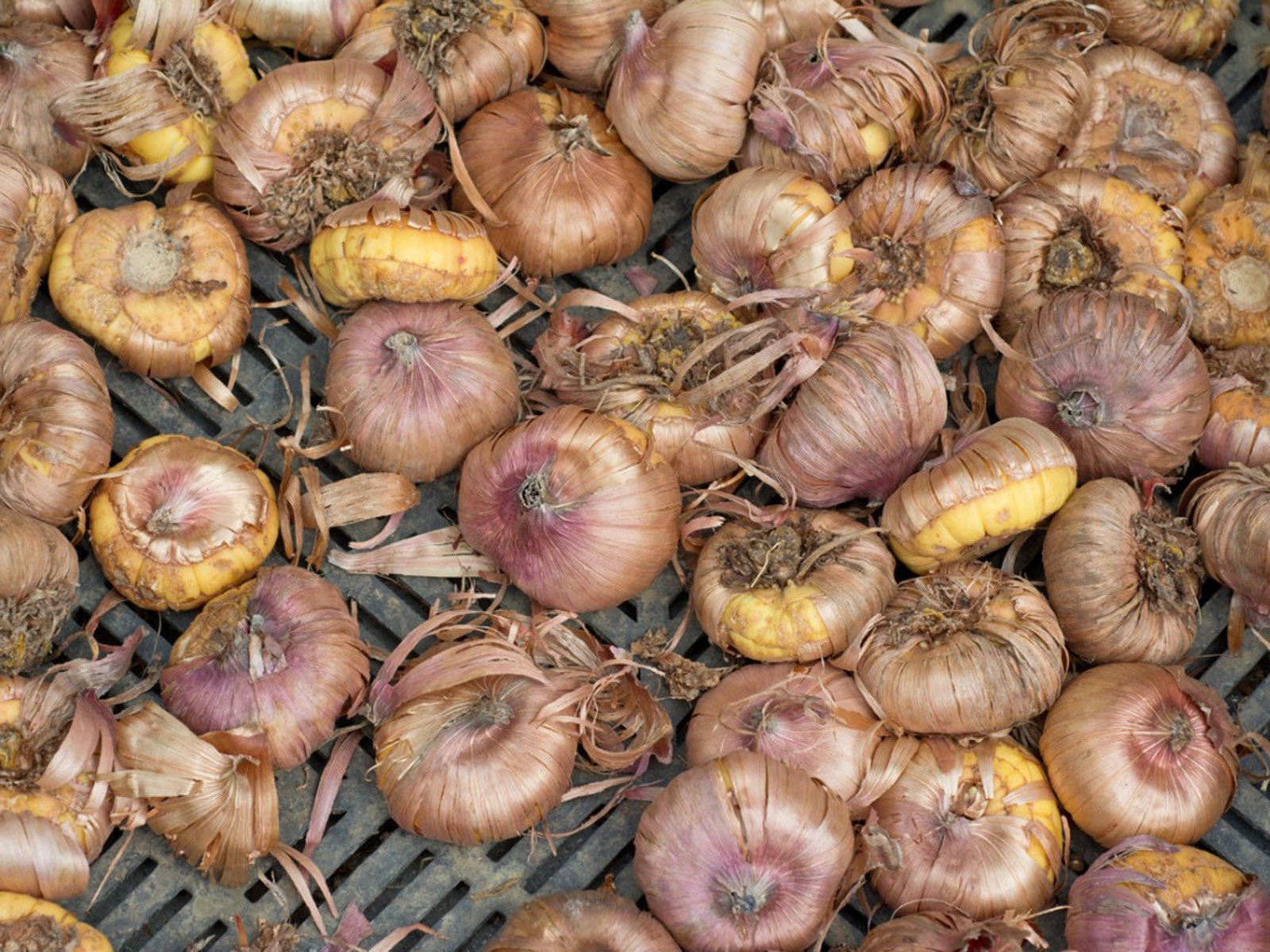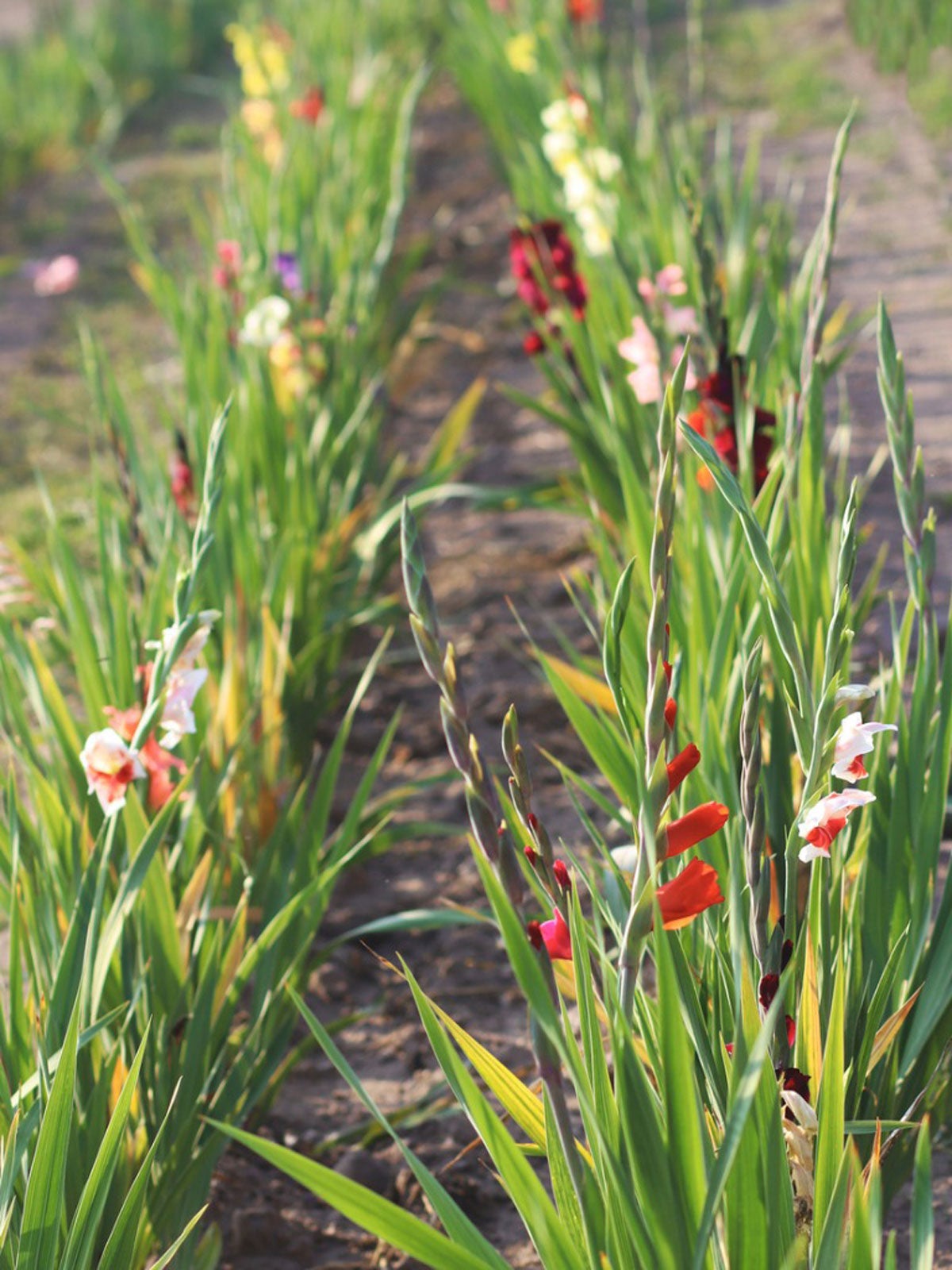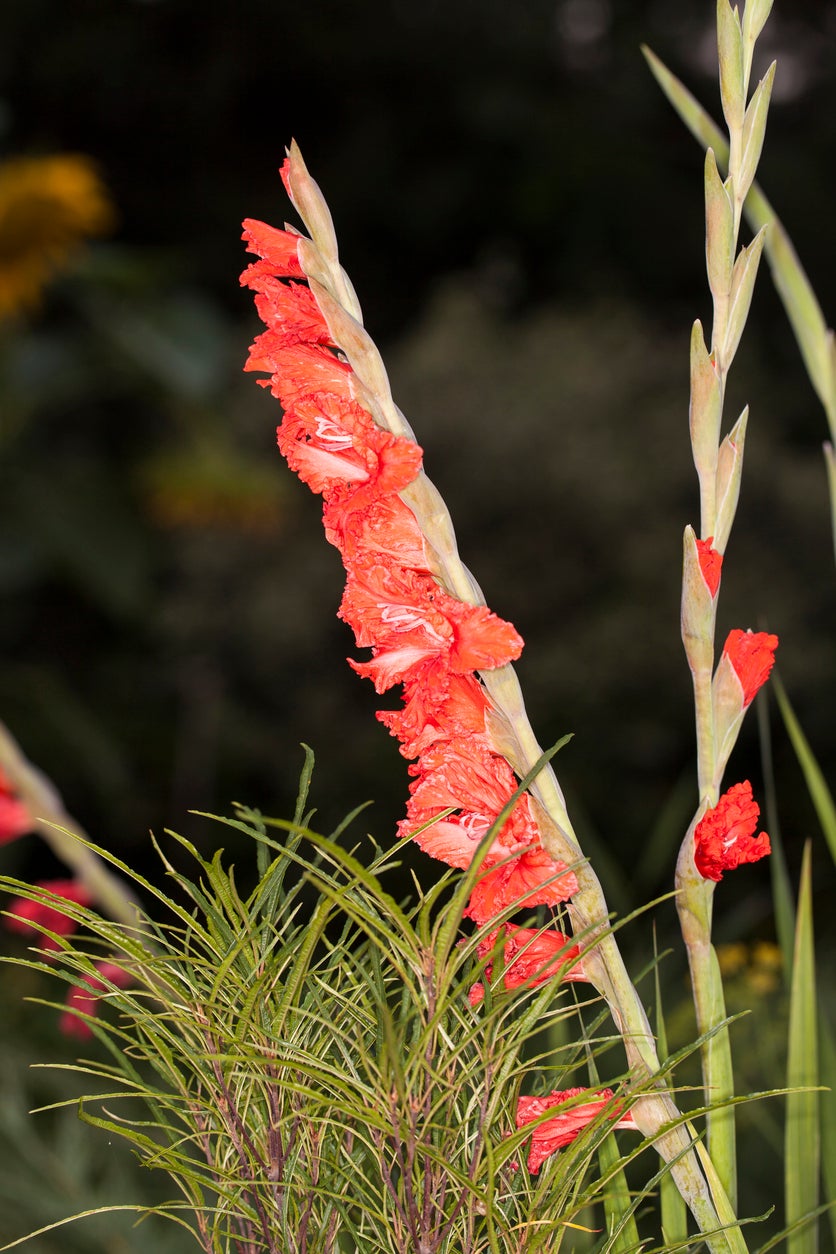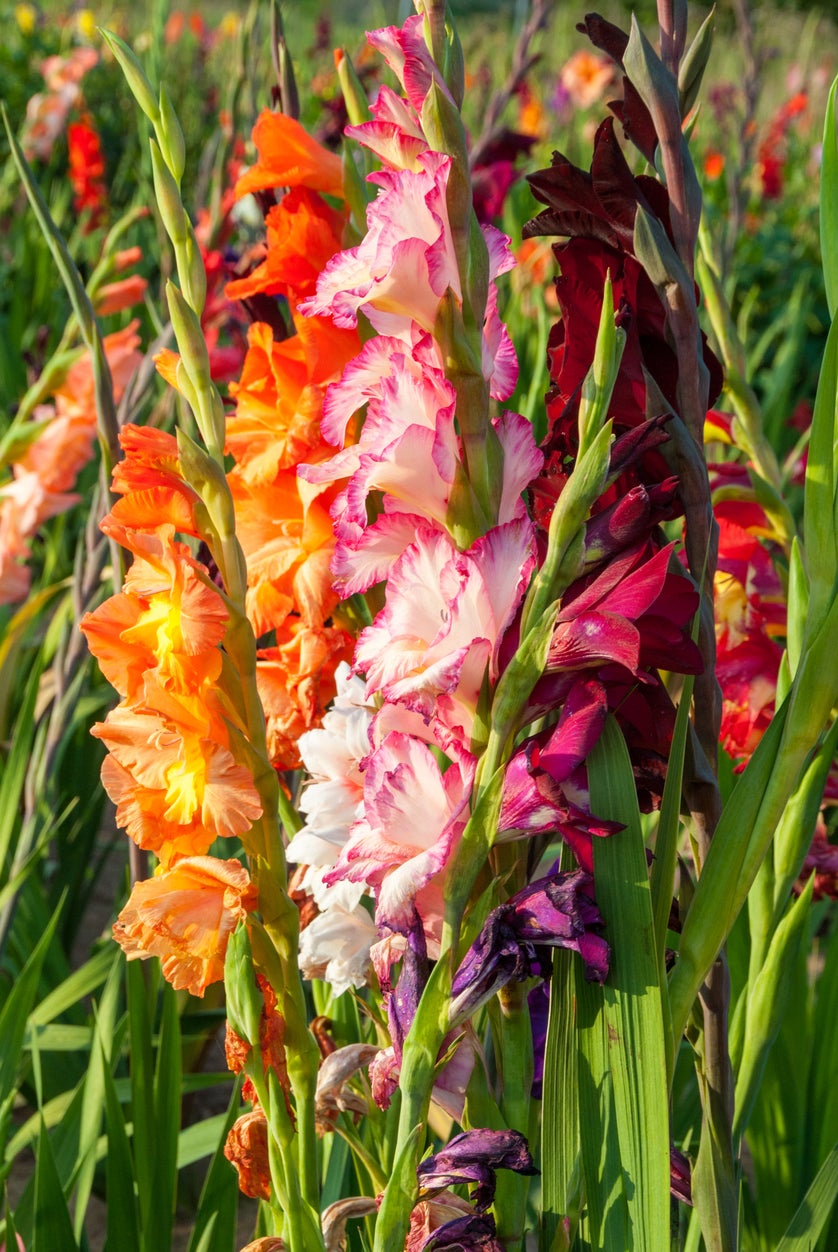Gladiolus Leaf Diseases: What Causes Leaf Spots On Gladiolus Plants

Gladiolus flowers have long been among some of the most popular plants for borders and landscapes. With their ease of growth, even novice gardeners can plant and enjoy these beautiful summer blooms. Ranging widely in color, these vibrant flower spikes are known to attract multitudes of pollinators.
When kept healthy and disease free, gladiolus plants will return year after year to create a stunning flower garden display. Issues like gladiolus leaf spot, however, may cause decline in the vigor of your plants. Becoming familiar with the signs of gladiolus leaf diseases is important in preventing its spread.
Gladiolus Leaf Spot Diseases
As with many ornamental flowering plants, leaf spots on gladiolus can be quite troublesome. Leaf spot diseases are generally caused by the spread of certain types of bacteria or fungus in the garden – such as botrytis blight, bacterial leaf blight, curvularia leaf spot, or stemphylium leaf spot. These pathogens are often introduced by infected plant matter and can then spread to other gladiolus plants.
Leaf spots of gladiolus may first appear when plants have started developing larger leaves. Gladiolus growers may notice yellowish spots as lesions begin to form. These yellow spots will have a water-soaked appearance. Over time, these sections of the leaves will begin to die. Bacterial leaf blight may also include oozing during wet conditions.
Whether or not the infection will impede the growth of the plant will depend greatly upon the severity. Gladiolus with leaf spots can be frustrating. However, there are some ways in which growers can prevent the presence and spread of the disease.
Preventing Gladiolus Leaf Spot Problems
To better prevent gladiolus leaf diseases, growers should make certain to purchase plant materials only from reputable sources. This will ensure that new plantings are healthy and disease free.
Leaf spot of gladiolus prefers conditions that are hot, humid, and wet. While nothing can be done about the weather, growers can space their plants to ensure adequate air circulation. Avoid watering the gladiolus from overhead. Watering the base of each plant will prevent any pathogens which are present from being splashed onto healthy plants.
Gardening tips, videos, info and more delivered right to your inbox!
Sign up for the Gardening Know How newsletter today and receive a free copy of our e-book "How to Grow Delicious Tomatoes".
If gladiolus leaves with spots do occur in the garden, they can be removed from the plant and from the site. Proper garden care and the removal of infected plant matter will be key in preventing the spread of gladiolus leaf diseases. Destroying infected leaves will help to deter the recurrence of leaf spot in following seasons.

Tonya Barnett has been gardening for 13 years. Flowers are her passion. She has transformed her backyard into a cut flower garden, which she regularly chronicles on her YouTube channel http://www.youtube.com/@tonyawiththeflowers.
-
 12 Lush Alternatives To A Lawn For Sustainable Spaces
12 Lush Alternatives To A Lawn For Sustainable SpacesAlternatives to a lawn are beautiful and also beneficial to your local ecosystem and its pollinators. Explore our top picks for plants to replace grass.
By Tonya Barnett
-
 Types Of Tomatoes Explained: Explore The Many Wonderful Shapes, Colors, Flavors, & Best Uses
Types Of Tomatoes Explained: Explore The Many Wonderful Shapes, Colors, Flavors, & Best UsesThe world of tomato varieties is vast and fascinating. Learn about the key types to grow in your garden, tailored to your preferences and space.
By Amy Grant
-
 Gladiolus Plants With Scab – Controlling Gladiolus Scab On Corms
Gladiolus Plants With Scab – Controlling Gladiolus Scab On CormsIf you are growing gladioli, you’ll want to know about gladiolus scab. For more information and tips on prevention and control, click here.
By Teo Spengler
-
Gladioli Mosaic Virus – Managing Symptoms Of Gladiolus Mosaic
Gladiolus blooms are featured in many cutting gardens for mid-summer bouquets. When issues like mosaic occur, this can naturally be alarming. Good cultural control can help prevent mosaic virus in gladiolus. Learn more in this article.
By Susan Albert
-
 Botrytis On Gladiolus Plants: How To Control Gladiolus Botrytis Blight
Botrytis On Gladiolus Plants: How To Control Gladiolus Botrytis BlightGladiolus botrytis diseases are not uncommon, so knowing the signs and how to manage them is important. Learn about gladiolus blight here.
By Mary Ellen Ellis
-
Treating Glads With Fusarium: How To Control Gladiolus Fusarium Rot
If the corms of your unplanted glads appear discolored and unhealthy, they may be infected with gladiolus fusarium rot. Learn more about fusarium wilt and rot on gladiolus plants in this article to see if your corms can be saved.
By Becca Badgett
-
 Is Your Gladiolus Falling Over – How To Stake Glads In The Garden
Is Your Gladiolus Falling Over – How To Stake Glads In The GardenGrowing glads is so simple, but sometimes the tall gladiolus falling over in the garden can be troublesome, if not unattractive. Luckily, with a little added support, this can be easily remedied. Click this article for additional information.
By Mary H. Dyer
-
 Gladiolus Are Falling Over – Learn About Staking Gladiolus Plants
Gladiolus Are Falling Over – Learn About Staking Gladiolus PlantsProlific bloomers they are, but gladiolus plants falling over is not uncommon. Staking gladiolus plants will keep their brightly colored heads from dipping or breaking, and there are any number of items that can be used as gladiolus plant stakes. Learn more here.
By Amy Grant
-
 Companion Planting With Gladiolus: Plants That Grow Well With Gladiolus
Companion Planting With Gladiolus: Plants That Grow Well With GladiolusAs well as bouquets, gladiolus looks amazing in flower beds and along garden borders. But what are some good companion plants for gladiolus? Click this article to learn more about plants that grow well with gladiolus.
By Liz Baessler
-
 Gladiolus Seed Pods: Harvesting Gladiolus Seeds For Planting
Gladiolus Seed Pods: Harvesting Gladiolus Seeds For PlantingYou can try saving gladiolus seeds to preserve a favorite variety and share it with other gardeners. It's easy to do, but the flowers are a long time coming. This article will provide more information about harvesting these pods on gladiolus.
By Bonnie L. Grant